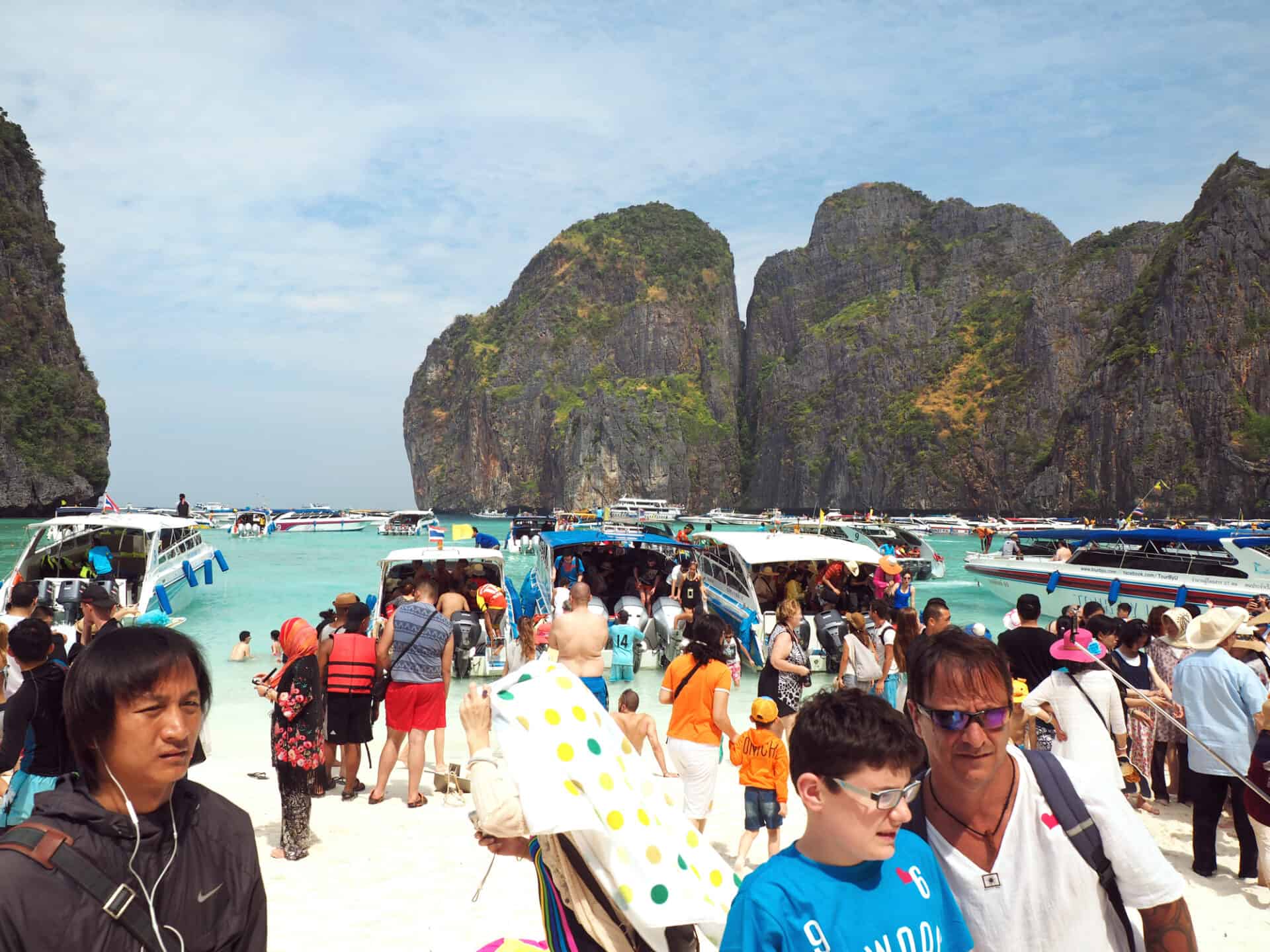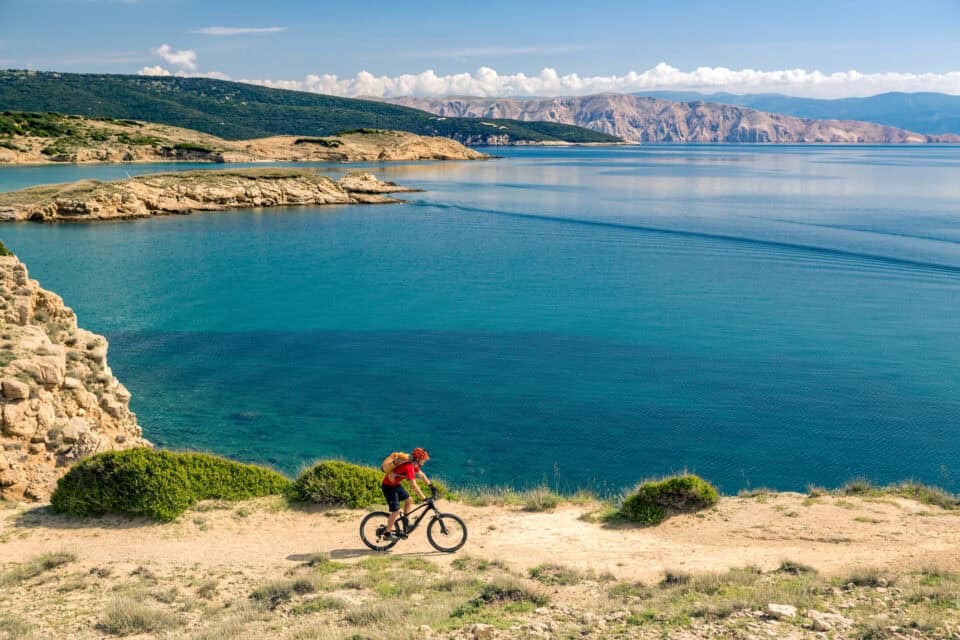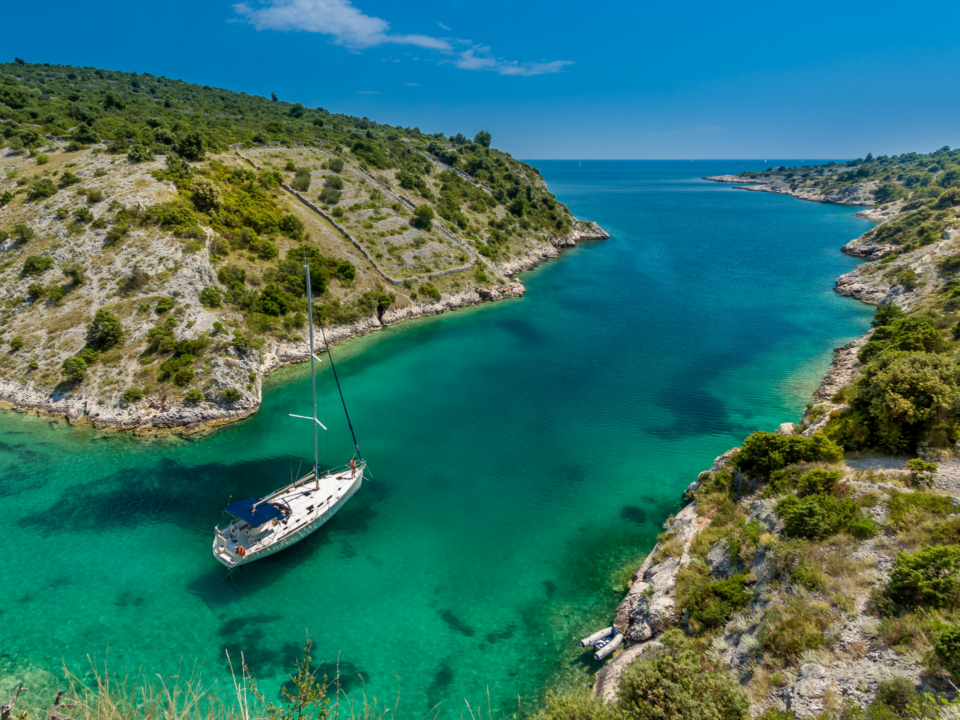Venice is one of Europe’s most popular tourist destinations with around 18 million visitors annually. From next spring tourists will enter Venice by paying an access “ticket” to the city on peak days, to be booked online at a cost of 5 euros per person, designed to limit and manage tourist flows on the most critical days. Venice also want to limit the number of participants in tour groups with guides to a maximum of 25 people.
Overtourism is a consequence of mass tourism
Mass tourism refers to a form of tourism in which large numbers of people visit the same destination, often at the same time of year. It can pose challenges for both destinations and local communities. Some governments and local people support mass tourism because it generates a lot of income, but many top travel destinations are reacting with penalties, higher fees and tourism taxes, and special rules that deter vacationers.
Overtourism is a consequence of mass tourism and refers to the negative impacts that occur when there is an excessive volume of tourists in a destination, resulting in congestion, environmental degradation, strains on infrastructure, and negative impacts on the quality of life for local residents. How to prevent the city from becoming an amusement park? Amsterdam and Barcelona no longer want party tourists and Venice prefers fewer cruise passengers. So not more tourists, but different ones. It is a recalibration of the old tourist model. Many destinations mainly target ‘quality tourists’, who do not cause any nuisance but bring in money.
The shift towards local and nature-based tourism after pandemic
The COVID-19 pandemic had a significant impact on mass tourism worldwide. Travel restrictions, lockdowns and health concerns severely disrupted international travel and tourism. Popular tourist destinations that were once overcrowded experienced a drastic reduction in visitors, leading to a temporary respite from the pressures of mass tourism. It also highlighted the vulnerability of communities overly dependent on mass tourism and the need for economic diversification.
The decline in tourist numbers during the pandemic led to positive impacts on the environment. Reduced air traffic and reduced tourism activity contributed to lower CO2 emissions, cleaner air quality and reduced pressure on natural resources in popular tourist destinations. And with international travel restrictions, there has been a shift towards local and nature-based tourism. People explored their own country or region, discovered lesser-known destinations and took part in outdoor activities such as hiking, camping and exploring nature reserves.
Highly popular tourist destination Barcelona
One notable example of a destination that has experienced mass tourism is the city of Barcelona in Spain. Barcelona has been a highly popular tourist destination for decades, attracting millions of visitors each year. The city offers a variety of attractions, including iconic landmarks like the Sagrada Familia, Park Güell, and the Gothic Quarter, as well as beautiful beaches and a vibrant cultural scene.
However, the popularity of Barcelona has led to challenges associated with mass tourism. The city has faced issues such as overcrowding, especially in popular areas like Las Ramblas, increased rents and property prices due to the expansion of tourist accommodations, and strains on local infrastructure and public services. These challenges have sparked debates and prompted the city to implement measures to mitigate the impacts of mass tourism and preserve its cultural heritage and quality of life for residents. Barcelona is an example of mass tourism but it is not the only destination that has faced these challenges. Many other popular tourist destinations around the world, such as Venice, Amsterdam, Bali, and Dubrovnik, have also grappled with similar issues associated with the high influx of visitors and have implemented measures to manage the impacts of mass tourism.
Entrance ticket in Venice on peak days
Venice is one of Europe’s most popular tourist destinations with around 18 million visitors annually (Venice has 250,000 inhabitants). A test is starting in spring 2024 when visitors to Venice will have to pay 5 euros to enter on peak days. The entry fee is specifically targeted at day trippers, not tourists who are staying in an accommodation in Venice. With the registration procedure you will obtain a QR code, the real pass for the visit, which must be shown during checks. Anyone found without a QR code could face fines, from 50 euros upwards. The final entry tax will not become effective until 2025, after analysis of the test carried out in 2024. The goal is to manage visitor influx more effectively, preserve the city’s unique heritage and to create a more livable city.
New regulations for tour groups with guides: no more than 25 people
In a bid to strike a balance between preserving the city’s delicate ecosystem and ensuring a positive experience for both residents and visitors, the municipal council of Venice has recently approved a resolution that introduces new regulations for tour groups. Scheduled to take effect on 1 June 2024, the resolution addresses the need for better management of tour groups in the historic center and on the islands of Murano, Burano, and Torcello. One key provision limits the number of participants in tour groups to a maximum of 25 (i.e. half the passengers on a tourist coach). By reducing group sizes, visitors can savor the city’s enchanting atmosphere while minimizing disturbances to its daily rhythm. Additionally, the use of loudspeakers, which often contribute to noise pollution, will be prohibited. This new chapter in Venice’s history signifies a commitment to sustainable tourism practices and the protection of its heritage.
Party tourists stay away
The municipality of Amsterdam does not want tourism that causes nuisance, like bachelor parties and organized pub crawls. In 2023 Amsterdam launched a discouragement campaign, mainly aimed at young men from Great Britain: Stay Away. Visitors remain welcome, but not if they misbehave and cause a nuisance. Never before has there been a campaign that shows that a certain type of visit is undesirable. The ‘How to Amsterdam‘ campaign tells visitors what is and is not allowed in the city, for example with signs about the ban on public urination and public drunkenness. They also strive for a maximum number of visitors and better distribution of tourism throughout Amsterdam. This is to safeguard the quality of life in the city for the residents of Amsterdam.
Bali’s new tourism tax
The island of Bali, the beloved Indonesian paradise, has announced the introduction of a new tourism tax for all international visitors. Effective from February 14, 2024, this tax will be applicable to every person visiting Bali, including children. The fee is set at IDR 150,000 per person per visit, approximately USD 10. Travelers venturing beyond Bali to explore neighboring destinations such as the Gili Islands, Lombok, or East Java need to be aware that the tax is charged on a per-visit basis. This means that if they return to Bali after visiting these locations, they will be required to pay the fee again upon re-entry.
Promoting sustainable tourism and economic growth
The introduction of this tourism tax is part of Bali’s larger vision of shifting towards more sustainable tourism models. By implementing this tax, the aim is to encourage visitors to stay longer and contribute further to the local economy. It complements the existing IDR 500,000 fee for the 30-day visa on arrival, which has been in place for some time.
Impact of mass tourism on Maya Bay
Maya Bay, located in Phi Phi Islands, Thailand, gained significant global attention after being featured in the movie “The Beach” starring Leonardo DiCaprio. The film’s popularity, coupled with the natural beauty of the bay, led to a surge in tourism and subsequently, issues related to mass tourism.
The popularity of Maya Bay resulted in an overwhelming number of visitors, leading to overcrowding on the beach and in the surrounding waters. The bay, with its limited space, struggled to accommodate the large number of tourists, causing environmental strain. The high volume of tourist activity had detrimental effects on the ecosystem of Maya Bay. Frequent boat traffic, anchoring, littering, and coral damage caused by snorkeling and diving activities contributed to the degradation of the bay’s marine life and coral reefs. Foot traffic from the numerous visitors began to erode the pristine beach sands, leading to significant beach damage and loss of vegetation. The once-idyllic shoreline started suffering from the impact of heavy footfall and improper waste management.
In 2018, due to the urgency to rehabilitate the ecosystem and restore the bay’s natural beauty, Thai authorities made the decision to temporarily close Maya Bay to tourists. The closure aimed to allow the damaged coral reefs and marine life to recover. During the closure, various environmental conservation initiatives were implemented, including coral rehabilitation programs, beach cleanup campaigns, and stricter regulations on waste management and boat anchoring. Thai authorities developed long-term plans for the reopening of Maya Bay, focusing on sustainable tourism practices. They aimed to limit the number of visitors, implement time slots for access, and enforce guidelines to ensure responsible behavior and minimize ecological impact.
Open to visitors again – but under certain conditions
The original plan to reopen Maya Bay was delayed due to the COVID-19 pandemic. Since the beginning of 2022, Maya Bay has been open to visitors again – but under certain conditions: the stay costs 400 baht (11 euros) entry. Swimming and snorkeling have been banned, and boats are no longer allowed to enter the bay. You have to moor at the back of Phi Phi Leh, from where tourists have to walk to the sandy beach. In addition, the number of daily guests was limited to 4,125 and the length of stay was limited to 60 minutes. Maya Bay will be closed to visitors from August 1st to September 30th every year. This is necessary for the environment to recover.
Maya Bay serves as an example of the challenges and consequences that arise when a destination experiences mass tourism without proper management and sustainability measures in place. The efforts undertaken to restore and conserve Maya Bay demonstrate the importance of balancing tourism promotion with environmental preservation to ensure the long-term viability of popular destinations.

How to manage the impacts of mass tourism
Tourist destinations could manage the impacts of mass tourism, preserve their natural and cultural heritage, and create a more sustainable and enjoyable experience for both visitors and locals alike if they use the following strategies:
Destination management plans: Developing comprehensive destination management plans can help regulate tourism activities and ensure sustainable growth. These plans involve setting limits on visitor numbers, establishing carrying capacities for attractions and natural areas, and implementing strategies to distribute tourism flows more evenly throughout the year.
Sustainable tourism practices: Encouraging sustainable tourism practices can minimize the negative environmental and cultural impacts of mass tourism. This includes promoting responsible travel behavior, supporting eco-friendly accommodations and transportation options, and encouraging waste reduction and energy conservation. How to reduce carbon footprint while traveling
Diversification: Encouraging the diversification of tourism offerings can help alleviate the strain caused by mass tourism. By promoting lesser-known attractions and exploring niche markets, destinations can distribute visitors more evenly and reduce pressure on overcrowded areas.
Community engagement: Involving local communities in decision-making processes and supporting community-led tourism initiatives can help ensure that the benefits of tourism are shared more equitably. Encouraging local entrepreneurship, cultural preservation, and participation in tourism activities can foster a sense of ownership and reduce resentment towards tourists.
Tourism taxes and fees: Implementing tourism taxes or fees can help manage visitor numbers and generate revenue for destination management and infrastructure development. These fees can be used to fund conservation efforts, maintain cultural heritage sites, or support community projects.
This article is part of the series by Conscious Travel Guide, your resource for mindful globetrotting.


